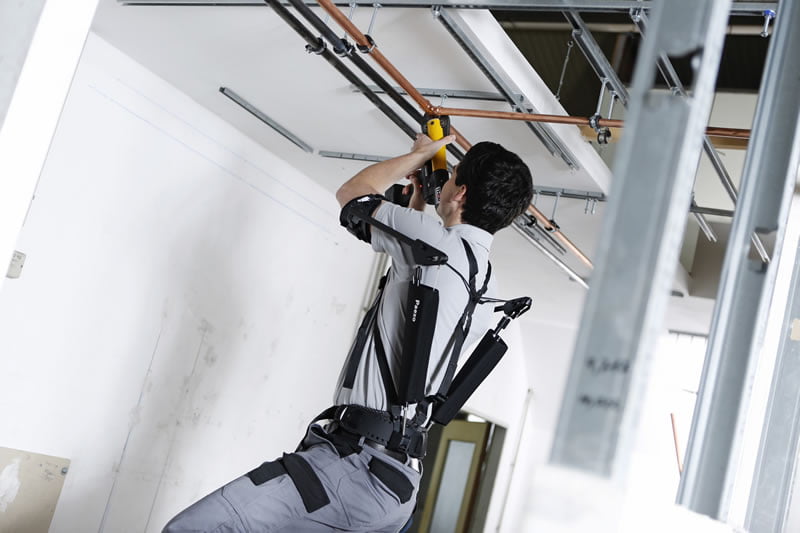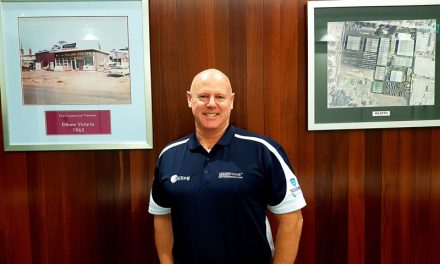Ottobock’s Paexo Shoulder exoskeleton.
For fans of the Paralympic Games, chances are the name Ottobock is already familiar to you. The century-old German company is a world-leader in prosthetics, orthotics and wheelchairs. As part of their range, unpowered passive exoskeletons have been used to support injured backs and limbs, providing support and stopping strain.
Now the Paexo Shoulder exoskeleton takes that same technology and applies it to workers involved in manufacturing and trades – any job that involves strenuous work, particularly in above-head positions. Mechanical cable pull technology transfers the weight of the arms to the hips, where larger muscle groups are better able to take the load. This means overhead activities become more comfortable, reducing strain injuries and increasing endurance.
Although it looks a bit like something out of Aliens or Avengers (pick your movie reference by age group) the Paexo exoskeleton is based on simple concepts. Springs and elastic elements create an energy store, meaning the worker’s shoulders don’t need to provide all the effort. Strapping on with about the same degree of Velcro-fiddling and buckling as a good hiking backpack, the device weighs 1.9kg and can be individually adjusted to the user, with multiple adjustment points.
The exoskeleton’s shoulder joint uses biomechanical principles to follow the natural movement of the shoulder. Users can adjust the level of support to suit their arm weight and needs. Skin-friendly material that is commonly used in medical technology prevents irritation and the loads transfer straight from the arms to the hips, without impacting on the back.
The biometrically oriented design maintains full range of natural motion, which, combined with the light, comfortable materials, means the exoskeleton can be worn for an entire eight-hour shift.
While the advantages for older workers are clear, the exoskeleton is also ideal for younger workers as it both eases the load on the body and reduces the risk of injury-causing overextension and stops repetitive strain injuries from starting. Work quality also improves as fatigue-caused inaccuracies drop dramatically.
The design of the Paexo came out of Ottobock’s ORTAS research project, which involved extensive research at manufacturing plants such as Volkswagen AG and analysis by experts at the Institute for Biomechanics and Orthopaedics at the German Sport University Cologne. While the initial testing focused on car manufacture, follow-up research looked at trades use, including building roles such as interior fit-outs and insulation installation.
Another exoskeleton for other processes is currently scheduled for release in April. The Hardback Exoskeleton is designed for workers such as those in the fabrication business who bend forward and lift a lot.
For more, visit www.paexo.com












